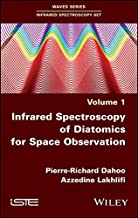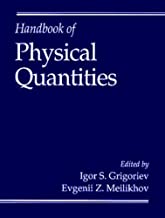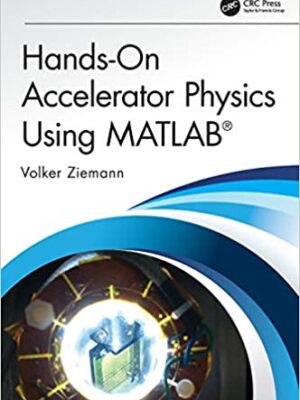Infrared Spectroscopy of Diatomics for Space Observation (Vol – 1)
Original price was: ₹12,734.14.₹10,187.31Current price is: ₹10,187.31.
ISBN: 9781786301161
Author/Editor: Pierre-Richard Dahoo
Publisher: John Wiley
Year: 2018
1 in stock (can be backordered)
Description
This book describes different theoretical models developed to identify the near and mid infrared (IR) spectra of diatomic molecules isolated in the gas phase or subjected to environmental constraints, useful for the study of environmental sciences, planetology and astrophysics.
The applications presented show how molecular interactions modify the near and mid IR spectra of isolated diatomics under the effect of pressure, a nano-cage (substitution site, Clathrate, Fullerene, Zeolite) or surfaces, to identify the characteristics of the perturbing environment.
Additional information
| Weight | 0.526 kg |
|---|
Product Properties
| Year of Publication | 2018 |
|---|---|
| Table of Contents | Foreword ix Preface xi Chapter 1. Generalities on Diatomic Molecules 1 1.1. Generalities on detecting diatomic molecules 2 1.1.1. Radiation-matter interaction for detection 2 1.1.2. Diatomic molecules: observation, analysis and interpretation 5 1.2. Hamiltonian of a diatomic molecule 9 1.3. Symmetry properties of a diatomic molecule 14 1.3.1. Group of symmetry 14 1.3.2. Symmetry of the electronic states 19 1.3.3. Symmetry of the total wave functions 22 1.4. Example of the diatomic molecule with two electrons H2, HD, D2 29 1.4.1. Hamiltonian of the isotopologues 29 1.4.2. BO approximation 32 1.4.3. Adiabatic representation 35 1.4.4. Diabatic representation 35 1.5. Conclusion 36 1.6. Appendix 37 Chapter 2. Energy Levels of a Diatomic Molecule in Gaseous Phase 41 2.1. Introduction 42 2.2. Pure vibration movement of a diatomic molecule 43 2.2.1. Harmonic oscillator: classical processing 44 2.2.2. Harmonic oscillator: quantum aspect 47 2.2.3. Transitions between two vibrational levels: selection rules 51 2.2.4. "Creation" and "annihilation" operators 54 2.2.5. Anharmonic oscillator 56 2.2.6. Contact transformation method 60 2.3. Rotation movement of a rigid diatomic molecule 67 2.3.1. Free rigid rotor: classical processing 67 2.3.2. Free rigid rotor: quantum aspect 68 2.3.3. Transitions between rotational levels: selection rules 72 2.4. Vibration-rotation coupling of a free diatomic molecule 73 2.4.1. Non-rigid rotor 73 2.4.2. Rovibrational transitions: selection rules 74 2.5. Appendix 76 2.5.1. The commutators 76 2.5.2. Expressions of pn and qn in terms of the operators a and a 76 2.5.3. Matrix elements of pn and qn 77 2.5.4. Matrix of rotation and rotational transitions 80 Chapter 3. Profile and Shape of Spectral Lines 83 3.1. Introduction 84 3.2. Semiclassical model of calculating the broadening parameters of spectral lines 85 3.2.1. General description of the interacting physical system 85 3.2.2. General expression of the profile of a spectral line 86 3.2.3. Consequences of the invariance of the Zwanzig relaxation operator under rotation 91 3.2.4. Semiclassical context for calculating the relaxation matrix 93 3.2.5. Broadening parameter according to the diffusion operator 97 3.2.6. Calculation of the differential cross-section S(b, v) 98 3.2.7. Interaction potential energy 102 3.2.8. Relative trajectory of the molecules 107 3.2.9. Expression of S(b,v) in terms of resonance functions 112 3.3. True shape, profile and intensity of an absorption line 115 3.4. Line profile 116 3.4.1. Lorentz profile 117 3.4.2. Gauss profile 118 3.4.3. Voigt profile 119 3.4.4. Galatry, Nelkin-Ghatak and Rautian-Sobelmann profiles 120 3.5. Conclusion 121 3.6. Appendix 122 3.6.1. Liouville formalism 122 3.6.2. The Clebsch-Gordan coefficients and the Wigner 3j symbols 123 3.6.3. The terms of the differential cross-section expansion S(b,v) 124 Chapter 4. Energy Levels and Spectral Profile of a Diatomic Molecule in Condensed Phase 127 4.1. Introduction 127 4.2. Inclusion model 129 4.2.1. Binary interaction energy 130 4.2.2. Lakhlifi-Dahoo inclusion model 137 4.3. Rare gas nanocage 138 4.3.1. The rare gases in the solid state138 4.3.2. Dynamics of the perfect fcc lattice (Bravais lattice) 141 4.3.3. Green function of the perfect monoatomic crystal 144 4.4. Inclusion of a molecule in a rare gas matrix 145 4.4.1. Deformation method 145 4.4.2. Equilibrium of the doped crystal 148 4.5. General Hamiltonian and separation of the movements 150 4.5.1. Hamiltonian of the system 150 4.5.2. Separation of the optical system's movements and the bath in the rigid matrix approximation 152 4.5.3. Vibrational mode 153 4.5.4. Orientational modes 155 4.5.5. Active optical system 163 4.5.6. Translational modes 163 4.5.7. Optical modes - bath coupling 166 4.6. Infrared absorption coefficient 167 4.6.1. General expression 167 4.6.2. Heisenberg representation 168 4.6.3. Averages and correlation functions 172 4.6.4. Bar spectrum or Dirac spectrum 174 4.6.5. Spectral profile 175 4.7. Conclusion 176 4.8. Appendix 177 4.8.1. Expression of the dispersion-repulsion contribution of the energy of truncated binary interaction in the fourth order 177 4.8.2. Rotation matrix 178 4.8.3. Eigenvalues correction of the orientation Hamiltonian 178 4.8.4. Eigenvalues correction of the orientation Hamiltonian 178 Chapter 5. Applications to HCl, CO, O2 and N2 179 5.1. The HCl heteronuclear molecule isolated and trapped in a matrix 179 5.1.1. Molecule in the gaseous phase 179 5.1.2. Molecule trapped in rare gas matrix 181 5.2. Lidar probing of terrestrial homonuclear molecules N2 and O2 183 5.3. The heteronuclear molecule CO trapped in a matrix and absorbed on graphite substrate (1000) at a low temperature 187 5.3.1. Molecule trapped in a rare gas matrix 187 5.3.2. Molecule adsorbed on the graphite substrate 189 5.3.3. Molecule-graphite interaction energy 191 5.3.4. Adsorption observables at a low temperature 192 5.4. Conclusion 196 Bibliography 197 Index 207 |
| Author | Pierre-Richard Dahoo |
| ISBN/ISSN | 9781786301161 |
| Binding | Hardback |
| Edition | 1 |
| Publisher | John Wiley |
You must be logged in to post a review.






Reviews
There are no reviews yet.